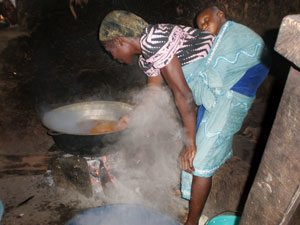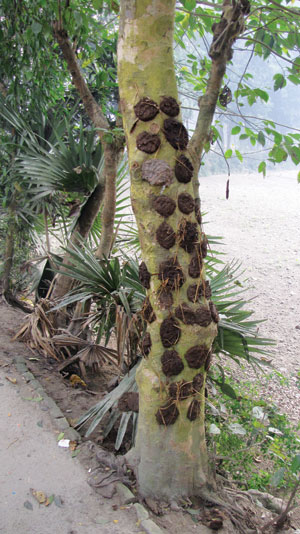Indoor air pollution
Pulmonologist Christopher 'Sola Olopade is battling a little-known but deadly global hazard: toxic fumes from rural cooking stoves.
By Lydialyle Gibson
Images courtesy Christopher ’Sola Olopade
Five years ago, when pulmonologist Christopher ’Sola Olopade arrived in Nigeria to study asthma among its rural residents, he had little grasp of the problem—even though Nigeria is his native country and asthma one of his specialties. No one did, he says. “In sub-Saharan Africa, we really don’t know much about what happens, because research never goes there. Most people just make assumptions based on experiences here, inferences from studying African Americans.”
Olopade came armed with specific questions: How was asthma in Nigeria different from in the United States? And why? He wondered about the effect of lifelong exposure to parasites and unclean conditions. “The thinking,” he explains, “is that exposure to dirt, to infections, to all that, without universal vaccination, may modulate the way the immune system develops, how asthma is expressed.”

Nigerian women often cook with infants on their backs, exposing both to toxic fumes.
Olopade quickly discovered, though, that a likelier influence than parasites was indoor air pollution. In most households with children that he studied, cooking was done over indoor stoves fueled by firewood, agricultural waste, or dried cow dung. Poor, rural communities often lack electricity, so residents have no choice, he says. In tiny homes with few windows and poor ventilation, that means constant exposure to carcinogenic dust and other toxins in the accumulating smoke. Olopade’s snapshots show walls black with soot. Some homes have no kitchen at all, and stoves sit in the hallways outside of bedrooms, where families inhale lingering fumes as they sleep.
“As a pulmonologist, I’m thinking, wow, you don’t need the worms, all the other stuff,” says Olopade, a Medical Center professor and clinical director of the University’s Global Health Initiative. “This is enough toxic material to make people who have underlying lung disease even worse.”
Worldwide, indoor air pollution from biomass burning causes about 1.6 million deaths every year, according to the World Health Organization. The vast majority of its victims, Olopade says, are women and children—those most likely to be home all day cooking. They die from lower respiratory infections, chronic obstructive pulmonary disease, lung cancer, pneumonia, and asthma. For women, who often cook with infants on their backs or toddlers by their side, “the risk of developing emphysema is higher even than for people who smoke,” Olopade says. Half of those who die are children younger than five.

Cow dung used to fuel Nigerian stoves is first hung on a tree to dry.
Olopade’s efforts in Nigeria are part research, part humanitarian. Working with village leaders, he’s trying to minimize residents’ exposure by improving standards for kitchen ventilation. He is also planning—with the help of a grant from the CHEST Foundation, an organization of American pulmonologists—to distribute high-heat, low-emission stoves to some of the most polluted homes. These stoves burn less fuel more efficiently and emit fewer toxins.
Olopade analyzed pollution in individual homes, “to define how bad it is.” The numbers surprised him. World Health Organization standards recommend that particulate matter not exceed a daily average of 50 micrograms. In some of the homes his team visited, levels were as high as 14,000 micrograms. The team also measured carbon monoxide: WHO standards call for no more than nine parts per million; Olopade found levels as high as 180 parts per million. “So people have ongoing, constant headaches, runny noses.”
Solutions are difficult. Recently Olopade teamed up with Medical Center epidemiologist Habibul Ahsan, who studies groundwater arsenic poisoning in Bangladesh, to devise a clinical study. “The same people who get exposed to arsenic in well water also are cooking with firewood,” Olopade says. “It’s like double jeopardy.” Once funding has been found, the researchers will study 1,000 mother-child pairs in Bangladesh and another 1,000 in Nigeria, defining and characterizing specific indoor air pollutants and collecting blood and urine samples to assess exposure levels and lung and other tissue damage.
Next, a two-year intervention phase would test the efficacy of antioxidant vitamin supplements, including vitamin E and selenium—thought to counteract the effects of pollution by helping the body break down toxins faster and reduce the risk of cancer and other illnesses. “This is one of the top-ten causes of death in the world,” Olopade says, “and we have a chance to help reduce it.”
Return to top
WRITE THE EDITOR
E-MAIL THIS ARTICLE
SHARE THIS ARTICLE
ALSO IN INVESTIGATIONS
RELATED READING
- “More Than Meets the Eye” (University of Chicago Magazine, June/04)
